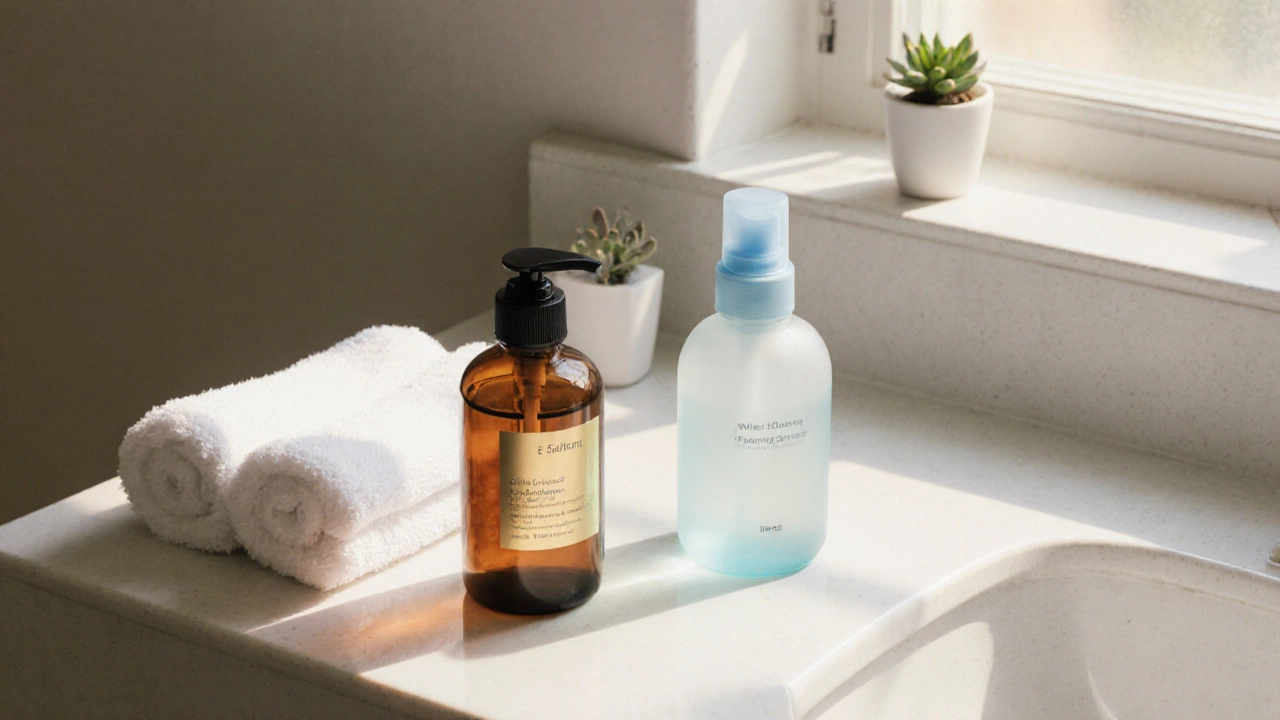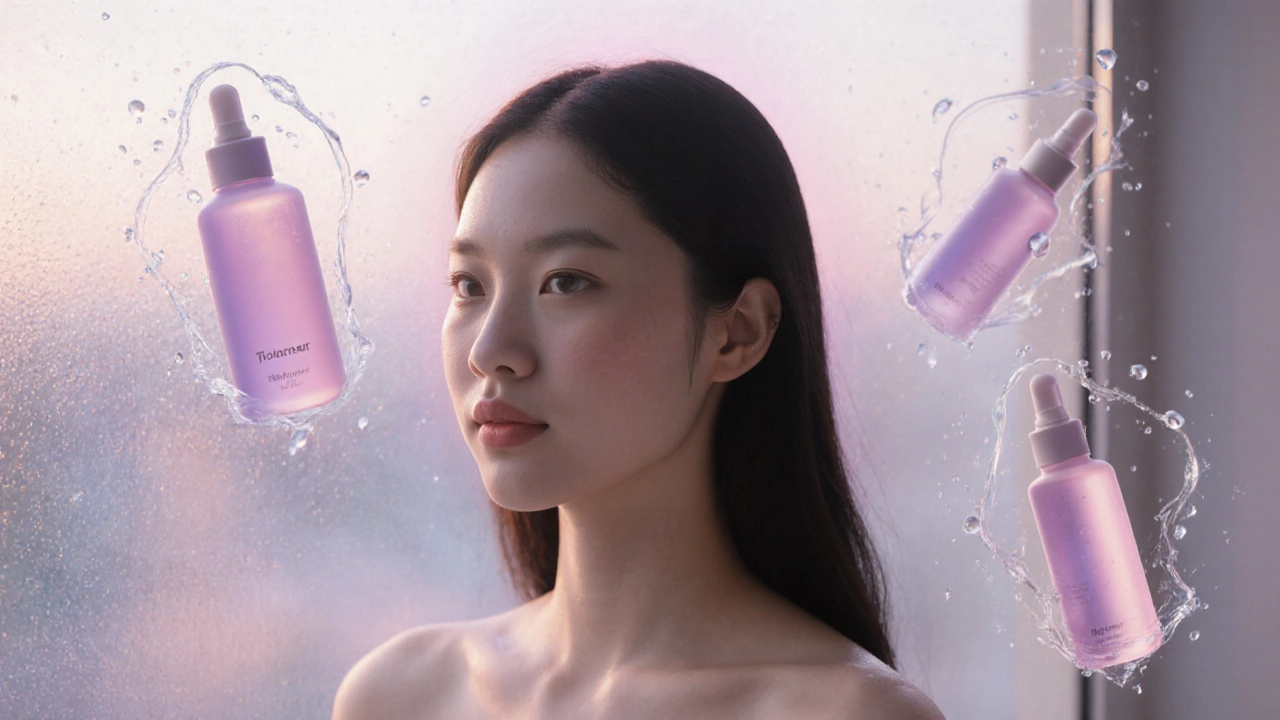
Korean Face Wash Method Guide
Your Personalized Routine
Prep the Skin
Splash lukewarm water on your face. Warm water helps the oil cleanser emulsify.
Apply Oil Cleanser
Take a pea-size amount, massage gently for 30-60 seconds. Focus on areas with heavy makeup or sunscreen.
Recommended:Emulsify
Add a splash of water to the palm, then continue massaging. The oil turns milky, lifting impurities.
Rinse
Rinse thoroughly with lukewarm water. Pat dry with a clean towel.
Apply Water Cleanser
Use a foaming or gel formula, massage for another 30 seconds. This step ensures any remaining oil or pollutants are removed.
Recommended:Second Rinse
Finish with cool water to close pores and lock in moisture.
Key Benefits of Double Cleansing
- Improved absorption of subsequent products
- Reduced breakouts
- Balanced pH levels
- Enhanced skin radiance
Korean face wash method is a two‑step cleansing approach that starts with an oil‑based cleanser to dissolve makeup, sunscreen and sebum, followed by a water‑based cleanser to rinse away any residue and reveal a fresh canvas for the rest of your skincare. Originating from the broader K‑beauty philosophy, this routine aims to keep the skin barrier intact while ensuring a thorough clean.
Why Double Cleansing Matters
Most Western routines rely on a single cleanser, which often struggles to break down heavy, oil‑based products. The Korean method uses oil‑based cleanser first because oil mixes with oil, making it the most efficient way to melt away makeup and excess sebum without harsh rubbing.
Following up with a water‑based cleanser removes any leftover grime and restores the skin’s natural pH, preventing clogged pores and the dreaded ‘tight’ feeling.
Step‑by‑Step Breakdown
- Prep the skin: Splash lukewarm water on your face. Warm water helps the oil cleanser emulsify.
- Apply oil cleanser: Take a pea‑size amount, massage gently for 30‑60 seconds. Focus on areas with heavy makeup or sunscreen.
- Emulsify: Add a splash of water to the palm, then continue massaging. The oil turns milky, lifting impurities.
- Rinse: Rinse thoroughly with lukewarm water. Pat dry with a clean towel.
- Apply water cleanser: Use a foaming or gel formula, massage for another 30 seconds. This step ensures any remaining oil or pollutants are removed.
- Second rinse: Finish with cool water to close pores and lock in moisture.
After double cleansing, you can move on to toner, essence, serum, moisturizer, and sunscreen - the rest of the K‑beauty routine.
Choosing the Right Cleansers
Not every cleanser works for every skin type. Here’s a quick guide:
- Oily/combination skin: Look for lightweight oil cleansers with tea tree or green tea extracts. For the second step, a gentle gel cleanser with niacinamide works well.
- Dry/sensitive skin: Opt for soothing oil cleansers containing jojoba or almond oil. Pair them with a hydrating, low‑foaming water cleanser enriched with hyaluronic acid.
- Acne‑prone skin: Choose non‑comedogenic oil cleansers, preferably fragrance‑free. A water cleanser with salicylic acid can help keep breakouts at bay.

Frequency and Timing
Most experts recommend double cleansing twice a day - morning and night - especially if you wear makeup or sunscreen. However, if your skin feels tight or you’re using very gentle products, you can limit the routine to evenings only.
Morning cleansing helps remove night‑time impurities, while night cleansing ensures you start fresh for your skin’s repair cycle.
Common Mistakes to Avoid
- Using water that’s too hot - it can strip natural oils and irritate the skin.
- Rubbing aggressively - gentle massage is enough; harsh scrubbing damages the barrier.
- Skipping the second cleanse - leaving oil residue can cause breakouts.
- Choosing cleansers with heavy fragrances or alcohol - they can disrupt the skin’s pH.
Benefits of the Korean Face Wash Method
When done correctly, double cleansing offers several measurable advantages:
- Improved absorption of subsequent products - a clean canvas means serums penetrate deeper.
- Reduced breakouts - thorough removal of oil and pollutants keeps pores clear.
- Balanced pH - the water‑based step restores the skin’s slightly acidic environment (around pH 5.5).
- Enhanced radiance - regular removal of dead skin cells and buildup yields a brighter complexion.

Comparison Table: Oil‑Based vs Water‑Based Cleansers
| Attribute | Oil‑Based Cleanser | Water‑Based Cleanser |
|---|---|---|
| Primary Function | Dissolves makeup, sunscreen, sebum | Removes residual oil, restores pH |
| Ideal Skin Types | All types, especially oily/combination | All types, especially dry/sensitive |
| Typical Ingredients | Olive oil, sunflower seed oil, tea tree | Glycerin, niacinamide, hyaluronic acid |
| Texture | Milky emulsifying when mixed with water | Foaming, gel, or creamy |
| Potential Irritation | Low when fragrance‑free; rare | Higher if contains alcohol or strong scent |
Mini‑FAQ: Your Quick Answers
Do I need to double cleanse if I don't wear makeup?
Even without makeup, sunscreen and environmental pollutants accumulate on the skin. A light oil cleanse in the evening helps break down these residues, while a gentle water cleanser ensures a fresh surface for nighttime products.
Can I use the same cleanser for both steps?
The core idea of the Korean method relies on two different textures. Using a single cleanser defeats the purpose, as oil won’t fully dissolve oil‑based makeup and a water cleanser alone can’t break it down effectively.
What temperature should the water be?
Lukewarm water (around 32‑35°C or 90‑95°F) is ideal. It helps the oil cleanser emulsify without shocking the skin. Finish with cool water (around 20°C) to close pores.
How often should I double cleanse?
Twice daily is standard for most people. If you have very dry or reactive skin, you might limit the routine to evenings and use a very gentle oil cleanser.
Is the method suitable for acne‑prone skin?
Yes, as long as you pick non‑comedogenic, fragrance‑free cleansers. The oil step removes excess sebum without over‑drying, and the water step can include salicylic acid to keep pores clear.
Can I skip the oil cleanser on busy mornings?
If you wear minimal products, a gentle water cleanser alone may be enough. However, maintaining the habit of double cleansing a few times a week helps keep the skin barrier healthy.
Putting It All Together: A Sample Morning & Night Routine
Here’s a concise flow that incorporates the Korean face wash method into a full routine:
- Warm water splash.
- Oil‑based cleanser - massage 45 seconds.
- Add water, emulsify, rinse.
- Water‑based cleanser - gentle circular motion.
- Cool rinse.
- Toner (hydrating or pH‑balancing).
- Essence or serum (vitamin C in the morning, retinol at night).
- Moisturizer.
- Sunscreen (morning only).
Adjust the product types based on your skin’s needs, but keep the two‑step cleanse as the foundation.
Final Thoughts
Adopting the Korean face wash method doesn’t require a pricey product line - just the right combination of oil and water cleansers suited to your skin type. Consistency is key; after a few weeks you’ll notice clearer pores, smoother texture, and better absorption of the rest of your skincare.
 Hair Care
Hair Care